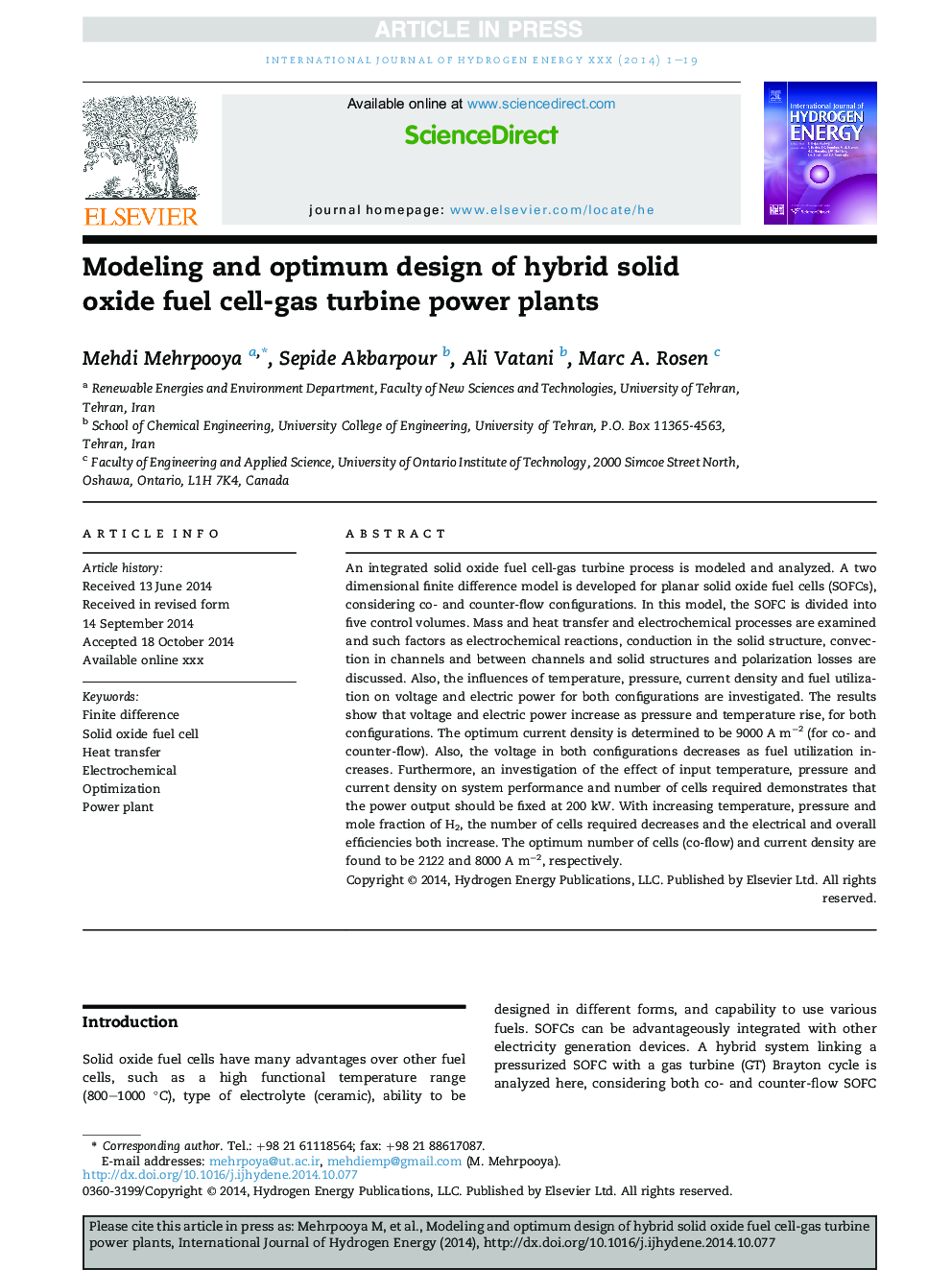| Article ID | Journal | Published Year | Pages | File Type |
|---|---|---|---|---|
| 7716842 | International Journal of Hydrogen Energy | 2014 | 19 Pages |
Abstract
An integrated solid oxide fuel cell-gas turbine process is modeled and analyzed. A two dimensional finite difference model is developed for planar solid oxide fuel cells (SOFCs), considering co- and counter-flow configurations. In this model, the SOFC is divided into five control volumes. Mass and heat transfer and electrochemical processes are examined and such factors as electrochemical reactions, conduction in the solid structure, convection in channels and between channels and solid structures and polarization losses are discussed. Also, the influences of temperature, pressure, current density and fuel utilization on voltage and electric power for both configurations are investigated. The results show that voltage and electric power increase as pressure and temperature rise, for both configurations. The optimum current density is determined to be 9000Â AÂ mâ2 (for co- and counter-flow). Also, the voltage in both configurations decreases as fuel utilization increases. Furthermore, an investigation of the effect of input temperature, pressure and current density on system performance and number of cells required demonstrates that the power output should be fixed at 200Â kW. With increasing temperature, pressure and mole fraction of H2, the number of cells required decreases and the electrical and overall efficiencies both increase. The optimum number of cells (co-flow) and current density are found to be 2122 and 8000Â AÂ mâ2, respectively.
Related Topics
Physical Sciences and Engineering
Chemistry
Electrochemistry
Authors
Mehdi Mehrpooya, Sepide Akbarpour, Ali Vatani, Marc A. Rosen,
